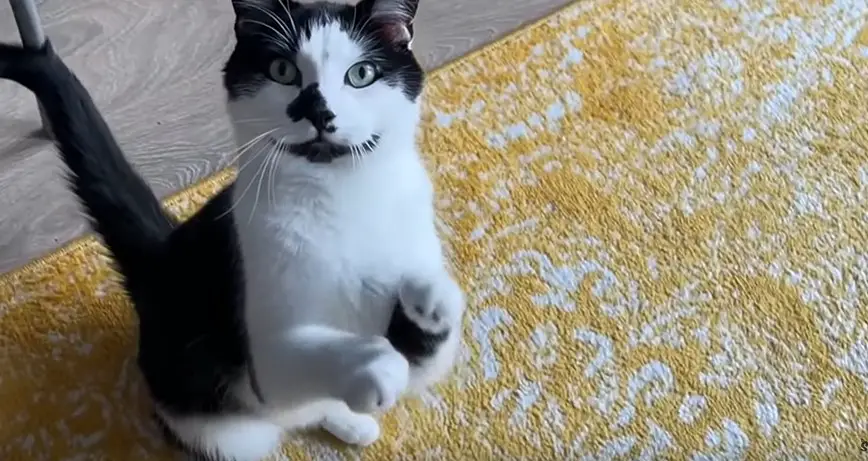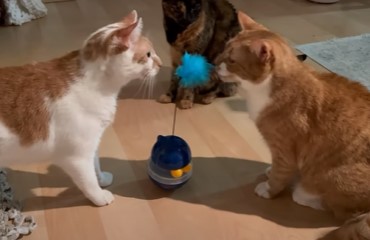Having a balanced diet is crucial for cats’ well-being. Homemade cat meals can be an excellent way to ensure they get the nutrition they need. But can cats eat vegetables? Let’s explore safe vegetables for cats and their benefits in this article.
Understanding Cat’s Dietary Needs
Understanding a cat’s dietary needs is essential to provide them with a healthy and balanced diet. Cats are obligate carnivores, meaning their bodies require meat to thrive.
Unlike omnivores, they lack the necessary enzymes to digest plant-based foods effectively. Protein from animal sources is vital for their muscle development, immune system, and overall well-being.
While cats need meat as their primary food source, some vegetables can be included in their diet as supplementary nutrition. Vegetables like cooked carrots, spinach, and green beans provide vitamins and fiber, supporting digestion and promoting overall health.
However, it’s crucial to remember that vegetables should not replace meat in a cat’s diet. Offering a variety of high-quality animal-based protein is essential to meet their dietary requirements fully.
Always consult with a veterinarian to ensure your cat’s diet meets their specific nutritional needs and to avoid any potential health issues. With proper understanding and care, you can provide your feline friend with a diet that keeps them healthy and happy.
Safe Vegetables for Cats
1. Carrots
Carrots are a great source of vitamins and minerals, such as vitamin A, potassium, and fiber. Grated or cooked carrots can be added to homemade cat food to promote healthy eyesight and support digestion.
2. Spinach
Rich in antioxidants and iron, spinach can be beneficial for a cat’s overall health. Ensure it’s cooked before adding to meals, as raw spinach contains oxalates that may interfere with nutrient absorption.
3. Broccoli
Broccoli is a cruciferous vegetable that provides essential vitamins like C and K. When cooked and offered in small amounts, it can be a healthy addition to your cat’s diet.
4. Green Beans
Low in calories and high in fiber, green beans can help with weight management in cats. Steamed or boiled green beans make a nutritious treat for your feline companion.
5. Peas
Peas are rich in vitamins and minerals, including vitamin B and potassium. Mashed or lightly cooked peas can add variety to your cat’s meals and contribute to their nutritional needs.
6. Pumpkin
Pumpkin is an excellent source of fiber and can aid in digestive health for cats. Offer cooked, unsweetened pumpkin as an occasional treat or mix it with their food.
7. Zucchini
Zucchini is a low-calorie vegetable that contains essential nutrients like vitamin C and potassium. Grated or steamed zucchini can be mixed into your cat’s food to add extra nutrients.
8. Sweet Potatoes
Rich in vitamin A and fiber, sweet potatoes are a nutritious addition to homemade cat meals. Cooked and mashed sweet potatoes can be served in moderation.
9. Cucumbers
Cucumbers are hydrating and low in calories, making them a refreshing treat for cats. Ensure to cut them into small, easy-to-chew pieces before offering.
10. Asparagus
Asparagus contains various vitamins and minerals, such as vitamin K and folate. Cooked asparagus can be offered occasionally as a part of your cat’s balanced diet.
11. Cauliflower
Cauliflower is another cruciferous vegetable that offers vitamins and minerals. Cooked and mashed cauliflower can be mixed with other ingredients to add nutritional value to your cat’s meals.
12. Brussels Sprouts
Rich in antioxidants and fiber, Brussels sprouts can be fed occasionally to cats when cooked and finely chopped.
13. Celery
Celery is low in calories and contains vitamins like A, C, and K. Offer small, diced pieces of cooked celery to your cat as a treat.
14. Beets
Beets are packed with nutrients and antioxidants. Cooked beets can be safely introduced into your cat’s diet in small portions.
15. Bell Peppers
Bell peppers are a good source of vitamin C and other antioxidants. Ensure they are cooked and offered in small amounts to your cat.
Moderate Consumption of Vegetables
If you’re considering giving your cat vegetables, it’s important to start slowly and introduce them one at a time. This will help to avoid any digestive upset.
You should also cook vegetables before giving them to your cat. Raw vegetables can be difficult for cats to digest and can even be harmful.
The amount of vegetables that you give your cat will depend on their individual needs. Some cats may be able to tolerate more vegetables than others.
It’s important to talk to your veterinarian to determine how much vegetables are right for your cat.
Vegetables to Avoid for Cats
Some vegetables are toxic to cats, such as onions, garlic, and tomatoes. Always research before introducing new veggies.
1. Onions: Onions, garlic, chives, leeks, and shallots are all members of the allium family. These vegetables can cause gastrointestinal upset in cats, including vomiting, diarrhea, and even anemia.
2. Avocados: Avocados contain persin, a toxin that can be harmful to cats. Persin can cause vomiting, diarrhea, and even heart problems in cats.
3. Rhubarb: The leaves of rhubarb contain oxalic acid, which can be harmful to cats. Oxalic acid can cause vomiting, diarrhea, and even kidney problems in cats.
4. Spinach: Spinach contains oxalates, which can bind to calcium in the body and prevent its absorption. This can lead to calcium deficiency in cats.
5. Cabbage: Cabbage can cause gas and bloating in cats. It can also interfere with the absorption of certain nutrients.
Preparing Homemade Cat Meals with Vegetables
A well-balanced meal includes both protein and vegetables. Experiment with recipes, and consult professionals if needed.
Sample Recipe: Chicken and Vegetable Delight
- Ingredients: Cooked chicken (shredded), cooked carrots (mashed), cooked spinach (chopped), cooked green beans (cut into small pieces).
- Instructions: Mix the shredded chicken, mashed carrots, chopped spinach, and green beans together. Serve to your cat while fresh and enjoy watching them relish this healthy homemade meal.
Conclusion
Safe vegetables like carrots, spinach, broccoli, green beans, and pumpkin can be part of a cat’s diet. Moderation is key, and avoiding toxic vegetables is crucial.
With careful preparation and the right balance, homemade meals with vegetables can enhance your cat’s health and happiness.
His professional interests include humane education, ethics, small animal behavior, and veterinary. As a pet lover from school life, having grown up with two cats and a dog. If he isn’t spending time with his friends and family, Justin enjoys traveling. Learn more about Justin here.



